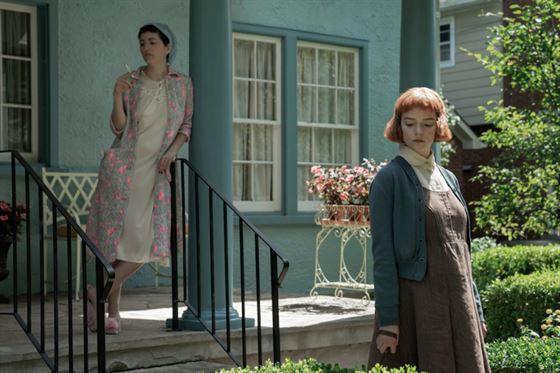Warning: spoilers ahead.
In the new Netflix drama, “The Queen’s Gambit,” Scott Frank adapts Walter Tevis’ 1983 novel of the same name into a seven-episode miniseries.
Anya Taylor-Joy, known for her roles in hit horror films such as “Split” and “The Witch,” stars as the show’s protagonist, Beth Harmon. Beth is thrown into the demanding world of chess, faced with sexism that she combats by misusing drugs and alcohol. Although some of the themes in the show can be overly emotional, these elements keep viewers on the edge of their seats from beginning to end.
The show revolves around Beth, a chess prodigy who, over time, ventures out into the world to compete in various chess tournaments. What began as a hobby that she was only interested in for money soon turns into a prideful gamble for her dignity as a woman in the world of chess.
Throughout the series, we get an inside look to Beth’s life prior to chess. We often see her smiling and enjoying time walking around in a nearby forest, something she grew out of as she got older.
Beth’s decisions at beginning of the series are impulsive and reckless, often leading her to trouble. She is overconfident in her chess-playing skills, which worked in her favor while she was in high school.
However, after her graduation, we get to see just how complex Beth is. Because of her traumatizing childhood, she often struggles to find peace within herself. As she gets older, addiction becomes a prevalent theme as most post-tournament nights end with her ingesting tranquilizers and alcohol.
While the show stars respected actors, including Bill Camp, whose character Mr. Shaibel introduces Beth to chess, and Moses Ingram, who plays Beth’s childhood friend, Jolene, the characters in “The Queen’s Gambit” are limited. From a stylistic perspective, this was done to embody how Beth sees the world around her. She usually remains within her comfort zone and only dares to leave when faced with a challenge.
As Beth’s character develops, she begins to embrace those around her as both her style and personality change simultaneously. Although we do not get to see who Beth ends up with romantically, we do get to witness the start of her finally learning to love herself.
In the final episode, Beth’s life comes full circle in a symbolic way that resembles the first time she ever played chess. Her decision to go against sexist societal norms is a significant theme throughout the show and is one of the main reasons she achieves victory in most matches.
Throughout the seven episodes, Taylor-Joy’s character stumbles and falls. For the most part, the show accurately depicts what the ’60s looked like for many women in America who had unlimited access to drugs and alcohol. Even though the series is set 60 years in the past, Beth must overcome issues involving substance misuse, sexism and identity, as many women today still do.
https://www.youtube.com/watch?v=CDrieqwSdgI
With the show’s title in mind, the King’s Gambit is a chess opening that allows for central domination across the board. With a play on words, “The Queen’s Gambit” can depict how Beth is not only able to dominate in her chess tournaments, but also in her battles against drugs, alcohol and depression.
Though fictional, Beth’s chess journey is nothing short of inspirational. Her character development from episode one onward is a testament to the various struggles and addictions she faces as she grows older.
Although a second season has not been confirmed, “The Queen’s Gambit” is sure to inspire young women to pursue their dreams.





